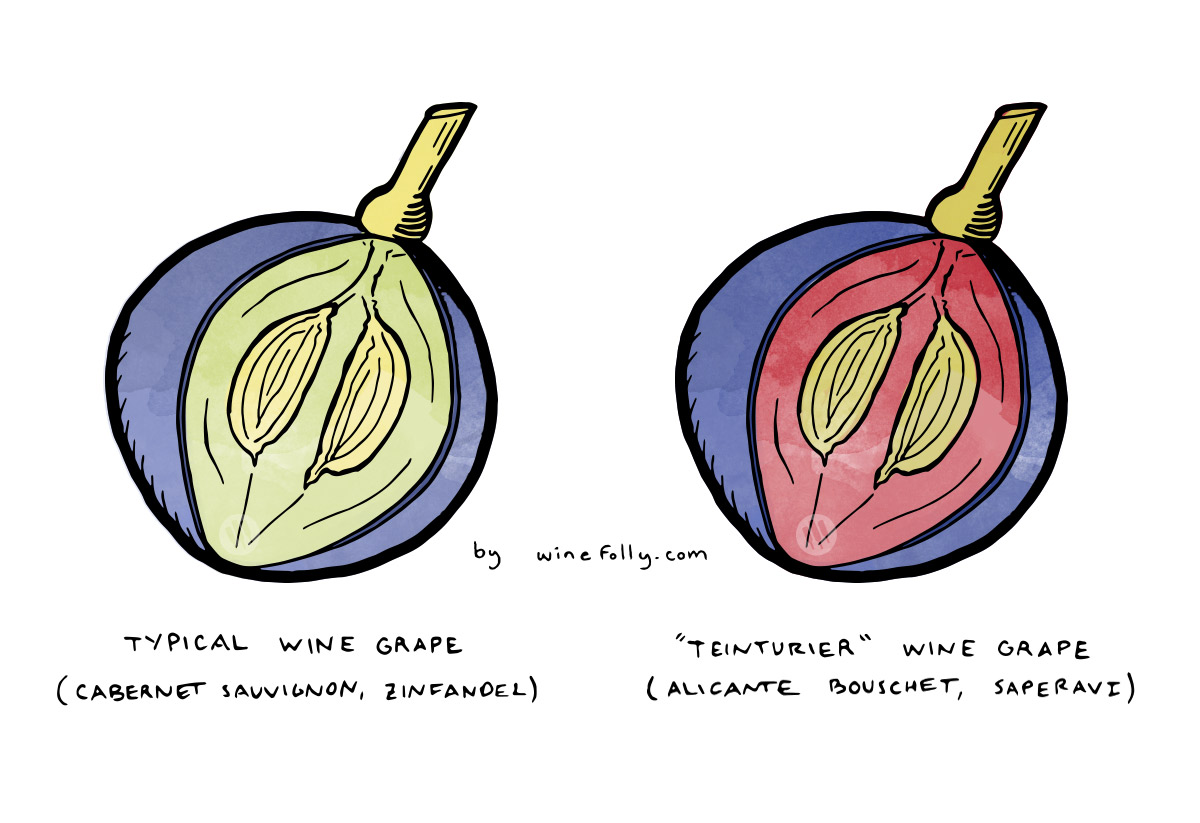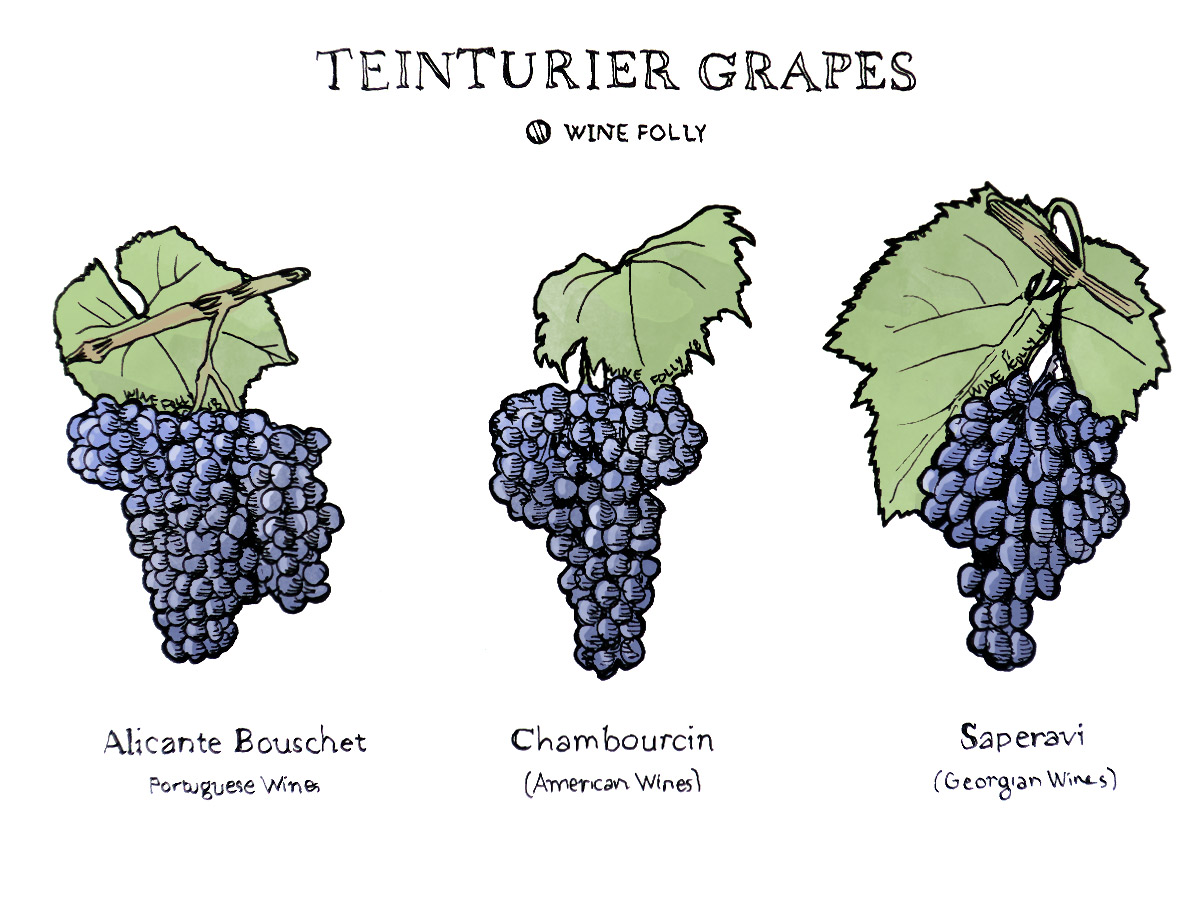What is a Teinturier Grape?
A teinturier grape is a red wine grape with dark skins and flesh. In contrast, regular red wine grapes have dark skins, but clear flesh. Fittingly, the word “teinturier” comes from the French “to dye or stain.”
Teinturier grapes are not a common sight in the vineyard.
Wait, Red Wine Grapes Have Clear Juice?
Indeed! It’s actually the grape skin that creates the color of the wine.
When the skins are soaked in juice, anthocyanin (color pigment) is released, literally staining the wine as a result. For that reason, we can have such things as rosé (limited skin contact) and white Pinot Noir (zero skin contact–made like a white wine.)
Though, like most things in wine, there’s an exception to the rule. It’s near impossible to make a white Syrah or Cabernet Sauvignon as the skins stain the juice almost immediately, consequently creating a not white wine. Included in this group of “always red” wines are teinturier grapes with dark skins and red flesh.
Why Do Teinturier Grapes Exist?
It’s a natural mutation. It’s thought that these red-fleshed grapes were grown to add visual depth to Aramon wine. Aramon (which is still in existence today) is a highly productive, mildew-resistant red wine variety from Languedoc-Roussillon.
Beginning in the 19th Century and spanning into the 1960s, Aramon was supposedly France’s most widely grown grape. Unfortunately, it was grown for quantity (not quality) and mostly found its way into cheap, easy-drinking rosé. Womp womp.
3 Examples of Teinturier Grapes
Alicante Bouschet
If you already knew about teinturier grapes, this is likely the grape you had in mind! Originally cultivated in 1866 to add visual depth to Aramon, Alicante is known for producing deep, dark red wines when used alone. It hasn’t always enjoyed the best of reputations. (Always the blender, never the blendee, eh, Alicante?) However, that’s changing fast in Spain and Portugal where it’s made into textured wines with rich blackberry flavors and spice notes.
Saperavi
The pride of Georgia (the country, not the state) and widely planted throughout the former Soviet Republic, this teinturier grape makes, yep, you guessed it, deep, dark red wines with ample acidity. Unlike Alicante, Saperavi is mostly known as a single-varietal wine with finer examples boasting age-worthy potential. It’s the wine you want when you’re chowing down on a stuffed, meaty pasta.
Chambourcin
(“Sham-boor-sin”) Not only is cold-resistant Chambourcin a teinturier grape, it’s also a French-American hybrid! (Good ol’ North American melting pot!) You may have noticed a “deep and dark” pattern with these wines, but Chambourcin is actually more akin to Cabernet Franc. If you can get your hands on it, expect robust black cherry flavors, along with some tobacco and green pepper notes. It may even change your opinion of wines produced from hybrid grapes…


